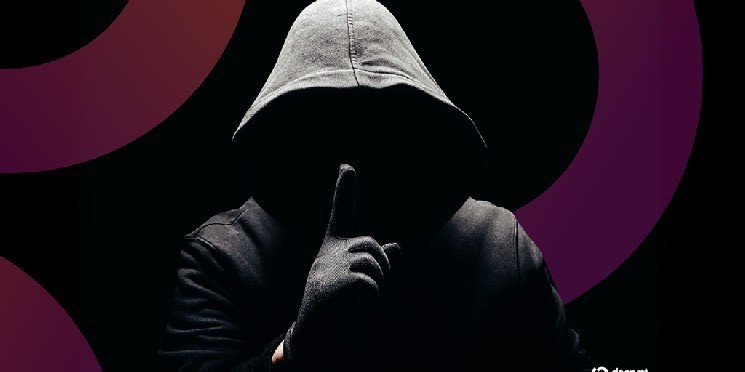In 2006, software program engineer Michal Pospieszalski found a harmful flaw within the US voting machine.
Employed by the Institute of Election Science, the place he served as Chief Know-how Officer, Pospieszalski flew to the headquarters of Election Vendor Election Techniques & Software program (ES&S) in Omaha, Nebraska. His job was to investigate the corporate's Ivotronic voting system.
Over the course of greater than per week, Pospieszalski has found a variety of points, together with “dangerous code practices, backdoors, static passwords.”
“The most important factor that wasn't there was proof of end-to-end encryption,” Pospieszalski mentioned. Decryption In an interview. “Even full exterior safety can't inform if a machine is authorized to vote or if it counts twice, thrice, 10 or 1,000 occasions.”
What's lacking from immediately's voting machines
Pospieszalski, CEO of blockchain safety and id software program firm Matterfi, mentioned the vulnerability will not be hypothetical. It may be simply exploited by folks with entry to voting machines and voter registration methods.
“You may run the identical vote in 10 occasions, however even immediately it's nonetheless true – it counts as 10 votes,” he defined. “And the scanners don't know rather more, nor does the tabulators. The central district's tabulators are like, “Oh, that was 10 votes.” ”
Pospieszalski mentioned that the separation of voters' data methods typically makes settlements unimaginable with out referring to the unique paper data.
“There isn’t a nameless serialization of every vote, which permits the system to know that every serialized vote should be counted solely as soon as,” he mentioned.
The answer, in keeping with Pospieszalski, relies on encryption know-how initially developed by David Chaum, a cryptographer who pioneered digital caches within the Eighties and launched blind signatures, which included software program slightly than {hardware}.
Chaum later based the early digital forex, Digicash, and proposed a cryptographic voting system that allowed public verification whereas sustaining anonymity. His work laid the important thing foundations for each safe digital voting like Bitcoin and the most recent cryptocurrencies.
“All you need is the final machine, the central depend tabulator or election administration system, to get the definition of votes, and each vote has a Kaauman blind serialization,” says Pospieszalski. “So, like in LA County, a printed output vote has a serial quantity. That serial quantity doesn't determine the voter, however tells the central district tablater, “Hey, it is a distinctive vote.” ”
“I noticed them, and somebody was fooled,” he added. “Particularly if 50 folks see it.”
Pospieszalski's proposed mannequin contains three counts: paper voting, conventional digital aggregation, and third encryption.
“The best way to see fraud is that you just say you’ve got 100 digital counts and also you say it is best to solely have 90 cryptographic counts,” says Pospieszalski. “Now you already know somebody injected 10 votes.”
Classes from Antrim County
In 2020, Pospieszalski was employed to conduct forensic evaluation in Antrim County, Michigan.
“In Antrim County, it was about 2,000 votes for Biden, and the subsequent day it was 2,000 votes for Trump,” he recalled. “What actually occurred was that the definition of votes was misunderstood and the system made it appear that Trump's vote was for Biden.”
He mentioned “every part has returned to regular” when the vote was rerun within the revised definition file.
Pospieszalski emphasised that the optics of the scenario gave public doubt whereas the error was technical.
“There have been no main hostile assaults, however folks need the reply, simply as voters are being riled by the media, particularly the right-wing media,” he mentioned.
Nevertheless, he discovered no proof of distant hacking or software program backdoors, however Pospieszalski mentioned he encountered indicators of potential votes throughout his evaluation.
“When you’ve got 42 decisions and you’ll see 100 votes in your evaluation the place all 42 are crammed out in the very same means, you've seen: “That's what I discovered some proof in Antrim County.”
Requested why serialization of cryptographic voting has not been carried out, Pospieszalski identified that it might change the system and firm's unwillingness.
“They suggest all kinds of actually, actually onerous to make use of plans… if you happen to're a producer of voting machines, this wouldn't make sense,” he mentioned.
Some applied sciences intention to enhance election security and confidence. In April, New York State Sen. Clyde Vannell launched a invoice that makes use of blockchain know-how to safe voter data and election outcomes. Blockchain is touted as a safe voting resolution, however Pospieszalski argued that the core points don't require that degree of complexity.
“All you're making an attempt to do is resolve a easy drawback, depend correct votes precisely,” he mentioned. “There's no want for additional complexity. Many individuals push blockchain as a result of it's common, nevertheless it's probably not mandatory.”
In distinction, Pospieszalski says his resolution works on the present machine.
“I'm simply saying, look, improve to an current system, work with Dominion, work with ES&S.
Requested how adoption would happen, Pospieszalski proposed legislation or mandate from the jurisdiction overseeing the election.
“Voting makers and their prospects (county) want a big precinct to drive change,” he defined. “We're going to be in enterprise if the legislation says that by 2028 or 2032 we have to embody end-to-end cryptographic proofs in our voting system.”
Based on him, the advantages will grow to be clear in future elections, particularly in fierce contests the place belief is weak.


